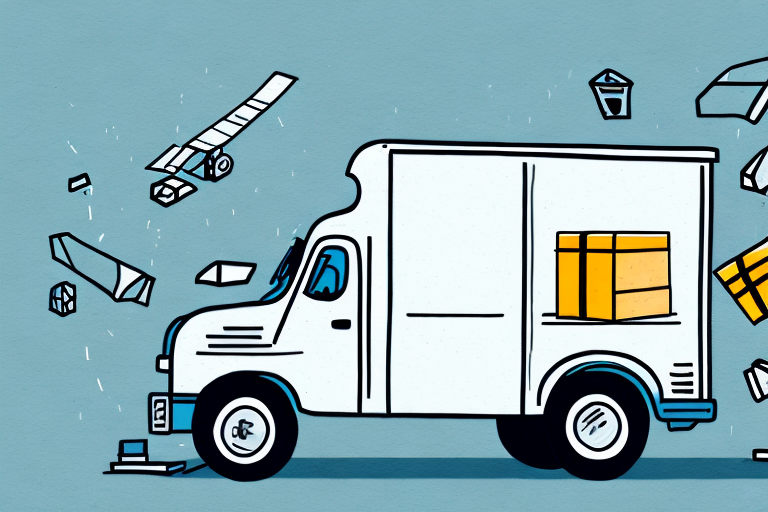Importance of Delivery Services for Your Business
In today's fast-paced world, delivery services are not just a convenience but a necessity for businesses aiming to thrive in a competitive market. The exponential growth of e-commerce, which is projected to reach $6.54 trillion by 2023 according to \Statista, underscores the critical role delivery services play in meeting consumer demands.
What Are Delivery Services and Why They Matter?
Delivery services involve the transportation of goods or services from a business to a customer's location. This seamless process addresses the growing demand for convenience, enabling businesses to reach customers beyond geographical limitations.
Implementing delivery services offers numerous benefits:
- Wider Audience Reach: Access customers who prefer online shopping or are unable to visit physical stores.
- Enhanced Customer Satisfaction: Reliable and timely deliveries foster trust and loyalty.
- Competitive Advantage: Offering superior delivery options can differentiate your business from competitors.
Benefits of Offering Delivery Services to Your Customers
Delivery services can significantly boost your business in several ways:
- Increased Revenue: By making products accessible to a broader audience, you can drive sales and profitability.
- Brand Awareness and Loyalty: Consistently reliable delivery builds a positive brand image and encourages repeat business.
- Competitive Edge: Competing with larger businesses becomes feasible when you offer similar or superior delivery options.
Types of Delivery Services
Understanding the various delivery options available is crucial for tailoring services to your business needs and customer expectations.
Same-Day Delivery
This service ensures that orders are delivered on the same day they are placed. Ideal for urgent or time-sensitive products like food, medicine, and essential supplies.
Next-Day Delivery
Orders are delivered by the next business day. This option balances speed and cost, making it suitable for consumers who seek faster delivery without the premium of same-day service.
Standard Delivery
Typically involves delivery within 3-5 business days. Being the most cost-effective option, it is best for non-urgent and bulkier items.
International Delivery
This service expands your market reach by delivering goods to customers in different countries. While it involves additional costs and regulations, it opens up significant new revenue streams.
Selecting and Implementing a Delivery Service
Choosing the right delivery service provider and integrating delivery into your business model requires strategic planning.
Factors to Consider When Choosing a Delivery Service Provider
- Price: Evaluate and compare rates from various providers to ensure cost-effectiveness.
- Reliability: Select providers with proven track records in timely and safe deliveries, supported by positive reviews and testimonials.
- Service Level: Ensure the provider offers necessary features such as tracking, insurance, and robust customer support.
- Geographical Coverage: Confirm that the provider can service all areas your business targets, both domestically and internationally.
How to Implement Delivery Services into Your Business Model
- Identify Your Delivery Needs: Assess the types of products you sell and the delivery preferences of your target audience.
- Select a Delivery Service Provider: Partner with a reliable provider that aligns with your service requirements and budget.
- Integrate Delivery Options: Incorporate delivery choices into your e-commerce platform, allowing customers to select preferred delivery methods and view associated costs.
- Staff Training: Equip your team with the knowledge to manage delivery operations and address customer inquiries effectively.
Best Practices for Managing Staff and Resources
- Comprehensive Training: Ensure staff are well-versed in delivery protocols and customer service standards.
- Route Optimization: Utilize software to design efficient delivery routes, reducing costs and improving delivery times.
- Quality Packaging: Invest in durable packaging materials to protect goods during transit.
- Prompt Issue Resolution: Establish protocols for addressing delivery problems swiftly to maintain customer satisfaction.
Strategies for Effective Delivery Services
Developing a robust delivery strategy is essential for maximizing the benefits of your delivery services.
Creating an Effective Delivery Service Strategy
- Set Clear Delivery Standards: Define expected delivery times, quality benchmarks, and customer service levels.
- Manage Customer Expectations: Transparently communicate delivery times, costs, and policies to avoid misunderstandings.
- Monitor and Improve Performance: Use analytics to track delivery metrics and continuously refine your service.
- Incentivize Usage: Encourage repeat business through promotions or discounts for regular delivery users.
Common Mistakes to Avoid
- Underestimating Delivery Costs: Accurately calculate all expenses, including transportation, packaging, and insurance, to prevent budget overruns.
- Overpromising Delivery Times: Set realistic delivery expectations to maintain trust and avoid customer disappointment.
- Ignoring Customer Feedback: Actively solicit and incorporate customer feedback to enhance delivery services.
- Neglecting Route Optimization: Failing to optimize routes can lead to increased costs and delayed deliveries.
How to Promote Your Delivery Service
- Website Integration: Clearly display delivery options, costs, and terms on your website to inform customers.
- Promotional Offers: Attract customers by offering free or discounted delivery during special campaigns.
- Marketing Campaigns: Highlight the convenience and benefits of your delivery services in marketing materials.
- Encourage Feedback: Use customer testimonials and reviews to build credibility and promote your delivery services.
Measuring and Optimizing Delivery Services
Assessing the effectiveness of your delivery services through analytics is vital for continuous improvement.
Measuring Success through Analytics
- Delivery Time: Track average delivery times to identify and address delays.
- Delivery Cost: Analyze the cost per delivery relative to revenue to identify opportunities for cost reduction.
- Customer Feedback: Monitor satisfaction levels to gauge service quality and identify areas for enhancement.
Leveraging Technology to Streamline Operations
- Delivery Management Software: Implement software solutions to manage orders, track deliveries, and communicate with drivers.
- GPS Tracking: Use GPS technology to provide real-time delivery updates to customers, enhancing transparency.
- Warehouse Management Systems: Optimize inventory control and order processing to ensure efficient delivery operations.
Overcoming Delivery Challenges
- Weather Disruptions: Develop contingency plans for adverse weather conditions to minimize delivery interruptions.
- Traffic Congestion: Utilize route optimization tools to navigate around traffic and maintain delivery schedules.
- Logistical Issues: Implement robust systems to handle incorrect addresses and missing items efficiently.
- Regulatory Compliance: Stay informed about and adhere to transportation regulations to avoid legal complications.
Future of Delivery Services
The delivery landscape is rapidly evolving with technological advancements shaping its future.
- Drone and Autonomous Vehicle Delivery: Emerging technologies promise faster and more efficient delivery methods, reducing reliance on traditional transportation.
- Real-Time Tracking: Enhanced tracking capabilities will provide customers with precise updates, improving transparency and satisfaction.
- Environmentally Friendly Options: The shift towards sustainable delivery solutions, such as electric vehicles and bicycles, addresses growing environmental concerns.
- Integration with Artificial Intelligence: AI-driven analytics will optimize delivery routes, predict demand, and enhance overall operational efficiency.
Staying abreast of these trends will enable businesses to adapt and capitalize on new opportunities, ensuring long-term success in the delivery service domain.
Conclusion
Delivery services are pivotal in expanding your business's reach, boosting revenue, and fostering customer loyalty. By understanding the various types of delivery options, selecting the right partners, and implementing strategic best practices, you can establish a robust delivery program that meets your business objectives. Embracing technological innovations and continuously refining your delivery strategies will position your business to thrive in an ever-evolving market.



















